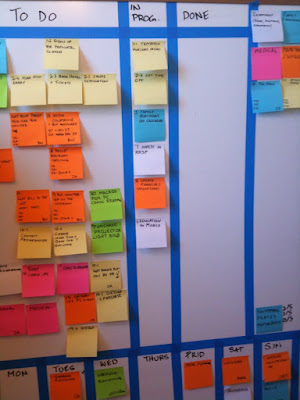I recently attended the Advanced Kanban Course by David J. Anderson and Associates, and David made a quick comment around how our locating work in progress to various work types/categories applies to real life as well. A certain amount of time should be spent on various "categories"; examples of categories could be investment/education, grooming/hygiene, entertainment, etc. Certain archetypes of people, do not balance these categories of life activities, and while these people may be deemed "successful", that might not always be the most pleasant people to be around, and certain gaps become painfully aware. David gave a great example of professional athletes, who often spend very little on "daily hygiene" (take a look at a professional athletes apartment) but will spend a lot more on their long-term investment categories of work.
With this in mind my wife and I (at my behest) decided to create our own "family" kanban. We’ve traded a couple of "lifestyle classes" which include the following:
- entertainment planning (including vacations)
- family related
- maintenance (both House and personal)
- medical
- investment (including education and long-term saving
We aren’t taking work in progress limits too seriously, but have set anything that’s in progress to approximately 9 items, we also have specific work items that we have assigned to specific days permanently, which will mark as done at the appropriate days.
We also don’t plan to be putting together a service-level targets like cycle time or failure in cake or anything like that. I just want to see if limiting working progress and visualizing work to help in terms of one’s personal as well as professional life.
